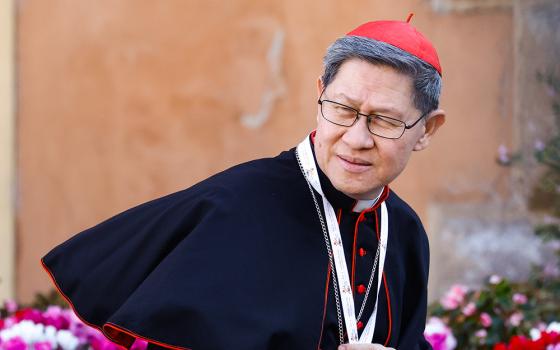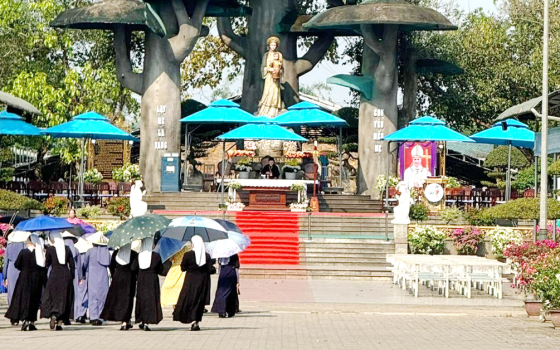
Viewpoint
After Pope Benedict XVI’s offenses to Jews and Muslims, to Protestants and to reform-oriented Catholics, it is now the turn of the Anglican Communion, which encompasses some 77 million members and is the third-largest Christian confession after the Roman Catholic and the Orthodox churches. Now that he has brought back the extreme anti-reformist faction of the Society of Pius X into the fold, Benedict hopes to fill up the dwindling ranks of the Catholic church with Anglicans sympathetic to Rome. Their conversion to the Catholic church is supposed to be made easier: Anglican priests and bishops shall be allowed to retain their standing, even when married. Traditionalists of the churches unite under the cupola of St. Peter’s.
This action is nothing less than a dramatic change of course: steering away from the well-proven ecumenical strategy of eye-level dialogue and honest understanding; steering toward unecumenical luring away of Anglican priests, who shall be even dispensed from the medieval celibacy law. Clearly, the well-meaning archbishop of Canterbury, Rowan Williams, was no match for cunning Vatican diplomacy. In his cozying up with the Vatican, he evidently did not recognize the consequences of Roman fishing in Anglican waters. Otherwise he would not have put his signature under the downplaying communiqué of the Catholic archbishop of Westminster. Can it be that those caught in the Roman dragnet do not see that they will never be more than second-class priests in the Roman church, that other Catholics are not meant to take part in their liturgical celebrations?
Ironically, this communiqué impudently invokes the truly ecumenical documents of the Anglican-Roman Catholic International Commission, which were worked out in laborious negotiations over the years between the Roman Pontifical Council for Promoting Christian Unity and the Anglican Lambeth Conference: documents on the Eucharist (1971), on church office and ordination (1973), and on authority in the church (1976-1981). However, these three documents, subscribed to by both sides at that time, aimed not at recruitment, but rather at reconciliation.
These documents of honest reconciliation provide the basis for a recognition of Anglican orders, which Pope Leo XIII, back in 1896, had declared invalid. But, from the validity of Anglican orders, there follows the validity of Anglican celebrations of the Eucharist. And so mutual eucharistic hospitality would be possible, in fact, intercommunion. And a slow process of growing together between Catholics and Anglicans would have been the consequence.
However, the Vatican Congregation for the Doctrine of the Faith quickly made sure that these documents of reconciliation disappeared in the dungeons of the Vatican. At the time, the German Catholic News Agency, in a confidential service advisory for “insiders,” cited “too much Küng theology” in them. The fact is that I had dedicated the English version of my book The Church to the archbishop of Canterbury, Michael Ramsey, writing under the dateline of Oct. 11, 1967, the fifth anniversary of the opening of the Second Vatican Council: “This will record my humble hope that there lies within the pages of this book a theological basis for a rapprochement between the churches of Rome and Canterbury.”
In this book, one also finds a solution to the tiresome question about the primacy of the pope. “A resumption of ecclesial community between the Catholic church and the Anglican church” would be possible, when “the church of England, on the one side, shall be given the guarantee that its current autochthonous and autonomous church order under the primate of Canterbury will be preserved fully” and when, “on the other side, the Church of England shall recognize the existence of a pastoral primacy of Petrine ministry as the supreme authority for mediation and arbitration between the churches.”
“In this way,” so did I express my hopes then, “out of the Roman imperium might emerge a Catholic commonwealth.”
But Benedict is set on restoring the imperium. He makes no concessions to the Anglican Communion. On the contrary, he wants to preserve the medieval, centralistic Roman system for all ages -- even if this makes impossible the reconciliation of the Christian churches in fundamental questions. Evidently, the papal primacy, which Pope Paul VI admitted was the greatest stumbling block to the unity of the churches, does not function as the “rock of unity.” The old-fashioned call for a “return to Rome” raises its ugly head again, this time through the conversion particularly of priests -- if possible, en masse. In Rome, one speaks of a half-million Anglicans and 20 to 30 bishops. And what about the remaining 76 million?
This is a strategy whose failure has been demonstrated in past centuries and that, at best, might lead to the founding of a “uniate” Anglican “minichurch” in the form of a personal prelature, not a territorial diocese. But what are the consequences of this strategy already today?
- Further weakening of the Anglican church. In the Vatican, opponents of ecumenism rejoice over the conservative influx. In the Anglican church, liberals rejoice over the departure of the catholicizing troublemakers. For the Anglican church, this split means further corrosion. It is already suffering from the consequences of the heedless and unnecessary election of an avowed gay priest as bishop in the United States, an event that split his own diocese and the whole Anglican Communion. This friction has been enhanced by the ambivalent attitude of the church’s leadership with respect to homosexual partnerships. Many Anglicans would accept a civil registration of such couples with wide-ranging legal consequences, e.g. in inheritance law, and would even accept an ecclesiastical blessing for them, but they would not accept a “marriage” in the sense reserved for thousands of years to partnerships between a man and a woman, nor would they accept a right to adoption for such couples with all the unforeseeable consequences this might have for the children.
- Widespread disturbance of the Anglican faithful. The departure of Anglican priests and their re-ordination in the Roman Catholic church raises grave questions for many Anglican faithful (and priests): Are Anglican priests validly ordained? Should the faithful together with their pastor convert to the Catholic church? What shall become of the church buildings, the pastors’ salaries and insurance funds?
- Irritation of the Catholic clergy and laity. Discontent over the ongoing resistance to reform is spreading to even the most faithful members of the Catholic church. Since the Second Vatican Council, many episcopal conferences, countless pastors and believers have been calling for the abolition of the medieval prohibition of marriage for priests, a prohibition that, in the last few decades, has deprived almost half of our parishes of their own pastor. Time and again, the reformers have run into Ratzinger’s stubborn, uncomprehending intransigence. And now these Catholic priests are expected to tolerate married convert priests alongside themselves. When they want themselves to marry, should they first turn Anglican, and then return to the church?
Just as in the 11th-century East-West schism, in the Reformation and in the First Vatican Council, the Roman thirst for power divides Christianity and damages its own church. It’s a tragedy.
Fr. Hans Küng is a theologian and author of many books, including Does God Exist: An Answer for Today and Infallible?: An Inquiry.





